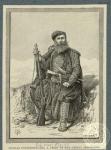

The fall of Crete to the Ottomans, which was complete after the
capitulation of Candia in 1669, interrupted violently the cultural and
financial flourish of the island which is known as the “Cretan Renaissance”.
The last beam of Hellenism was extinguished and the island as a whole
subjugated to the common faith of the Greek territories. Human losses during
the long lasting siege, the immigration of Candia’s inhabitants to the West,
the violent expatriation of the Christian population from the city centers and
the massive islamizations diluted the civil life and
dramatically diminished the population. The poet Emmanuel Zane Bounialis
writes:
If all the Cretans could gather together, they
could not overcome, in my opinion
the number of ten thousand people alive, at
that period of time;
‘cause they were killed, captured,
dispersed in many countries.
The French traveler Pitton de Tournefort, who visited Candia just 30
years after the fall, described it as “a
relic of a city”. The trade was abandoned and the economy was restricted to
agriculture and stock raising. The hard conditions of living, the heavy
taxation and the social oppression, the cruelty of the conquerors and the
numerous adventures of the rebellious people of Crete fulfill the image of
their life after 1669. The famous French righter Victor Hugo describes the
situation with the following words:
“Why
Creta was risen up? Because on the one hand God made it the most beautiful
place on Earth and on the other the Turks turned it to the most miserable.
Because it produces but it doesn’t trade, it has cities but no streets,
villages but no paths, harbors but not any secure haven, river but no bridge,
children but no school, rights but no low, sun but no light at all. The Turks
bring the darkness”.
 | 6. The Great Castle (Kandiye) | |
|---|---|---|
 | 6.2 Heraklion during the Ottoman period | |
 | 6.3 The rebellion of Daskalogiannis (1770) |